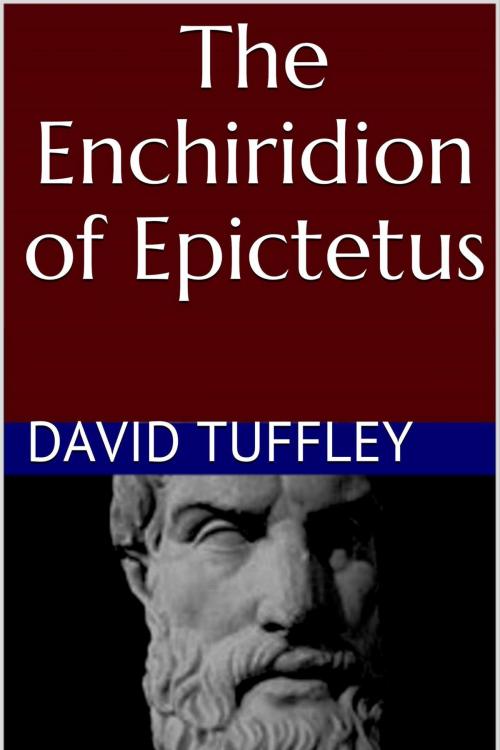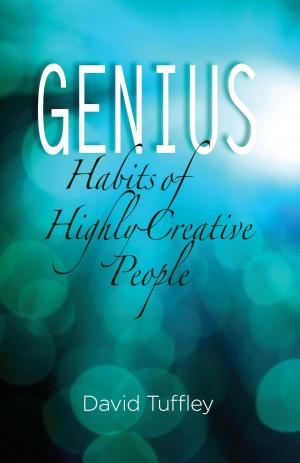The Enchiridion of Epictetus
Nonfiction, Religion & Spirituality, Philosophy, Ancient, Health & Well Being, Self Help, Self Improvement, Motivational| Author: | David Tuffley | ISBN: | 9781465769848 |
| Publisher: | Altiora Publications | Publication: | December 8, 2011 |
| Imprint: | Smashwords Edition | Language: | English |
| Author: | David Tuffley |
| ISBN: | 9781465769848 |
| Publisher: | Altiora Publications |
| Publication: | December 8, 2011 |
| Imprint: | Smashwords Edition |
| Language: | English |
The Enchiridion (Greek for Handbook, pronounced En-ky-ridion) of Epictetus is a favourite text of the Stoic school of philosophy. Compiled by Arrian, a former pupil around the time of Epictetus’ death in 135 AD, this enduring text is a compilation of lecture notes based on Epictetus’ lessons. It has long been considered an excellent manual of practical philosophy.
Epictetus (55 – 135 AD) was born at Hierapolis in what is now Turkey. Sold to Epaphroditos, who was secretary to Emperor Nero, he spent his youth in Rome. He developed a consuming passion for philosophy. With the permission of his master, Epictetus was allowed to study Stoic philosophy. Over time, as his learning and wisdom grew, he became a respectable citizen of Rome, and an esteemed philosopher.
Epictetus, unlike some of his metaphysical forebears, concentrated on making philosophy practical. How it could be used beneficially in everyday life. The timeless message of the Enchiridion is as practical today as it was in ancient Greece. Perhaps this is where the Enchiridion gets its enduring power and long-life.
A central theme of the work is to clearly distinguish between what we can and cannot control in life. We can control what we think, and how we act. We cannot control what others think and how they act. We must put our effort into what we can control and refuse to worry about what we cannot.
Following on from this is to limit our expectations. If we understand we cannot control people, then we will not expect them to behave in a certain way, and we will not get upset or disappointed when they do something different.
Another theme is to not become attached to people and things such that when they disappear from our lives, we will be upset. This idea bears a striking resemblance to the central Buddhist tenet of non-attachment to impermanence.
Epictetus urges us to observe carefully the patterns of Nature and learn to live in harmony with them. This includes accepting what happens in life with grace, without resistance.
It is how we think about events that makes them good or bad, not the event itself. Our beliefs create our reality. The same event could be interpreted by two people in diametrically opposed ways, according to their belief.
These have been a sampler of the many practical recommendations to be found in this remarkable book.
The first English translation was published around 1567, though this book is based on Elizabeth Carter’s 18th Century translation.
Stoic philosophy, an Introduction
Stoicism has come to have a narrow and somewhat negative meaning of being unemotional or indifferent to suffering, however this is a distortion. In a world of easy fixes, and mass consumption where pleasure is seen as the greatest good, Stoicism seems oddly archaic and irrelevant. Notwithstanding this, its real message has great relevance in the 21st Century.
Influenced by the earlier work of Socrates and Diogenes of Sinope, the Stoic school of philosophy was founded around 300 BC by Zeno of Citium. Zeno taught that a wise person should not allow their emotions to rule them; instead they should master their emotions and use logic to think rationally about how to behave in life. He urged his followers to study carefully the laws of Nature and to live in harmony with them.
A central point in Stoic philosophy is the active relationship between the laws of Nature that rule the Cosmos, and human free will. A wise person derives maximum benefit and happiness in life by bringing his or her will into harmony with Nature. They come to know themselves, recognising that their inner nature (microcosm) is a representation of the outer macrocosm, or universe; the same nature in both, differing only in scale.
With its emphasis on duty and right action, Stoicism is therefore well-suited to the needs of those who would lead. It was used as a guide by the ruling class of Rome for centuries.
The Enchiridion (Greek for Handbook, pronounced En-ky-ridion) of Epictetus is a favourite text of the Stoic school of philosophy. Compiled by Arrian, a former pupil around the time of Epictetus’ death in 135 AD, this enduring text is a compilation of lecture notes based on Epictetus’ lessons. It has long been considered an excellent manual of practical philosophy.
Epictetus (55 – 135 AD) was born at Hierapolis in what is now Turkey. Sold to Epaphroditos, who was secretary to Emperor Nero, he spent his youth in Rome. He developed a consuming passion for philosophy. With the permission of his master, Epictetus was allowed to study Stoic philosophy. Over time, as his learning and wisdom grew, he became a respectable citizen of Rome, and an esteemed philosopher.
Epictetus, unlike some of his metaphysical forebears, concentrated on making philosophy practical. How it could be used beneficially in everyday life. The timeless message of the Enchiridion is as practical today as it was in ancient Greece. Perhaps this is where the Enchiridion gets its enduring power and long-life.
A central theme of the work is to clearly distinguish between what we can and cannot control in life. We can control what we think, and how we act. We cannot control what others think and how they act. We must put our effort into what we can control and refuse to worry about what we cannot.
Following on from this is to limit our expectations. If we understand we cannot control people, then we will not expect them to behave in a certain way, and we will not get upset or disappointed when they do something different.
Another theme is to not become attached to people and things such that when they disappear from our lives, we will be upset. This idea bears a striking resemblance to the central Buddhist tenet of non-attachment to impermanence.
Epictetus urges us to observe carefully the patterns of Nature and learn to live in harmony with them. This includes accepting what happens in life with grace, without resistance.
It is how we think about events that makes them good or bad, not the event itself. Our beliefs create our reality. The same event could be interpreted by two people in diametrically opposed ways, according to their belief.
These have been a sampler of the many practical recommendations to be found in this remarkable book.
The first English translation was published around 1567, though this book is based on Elizabeth Carter’s 18th Century translation.
Stoic philosophy, an Introduction
Stoicism has come to have a narrow and somewhat negative meaning of being unemotional or indifferent to suffering, however this is a distortion. In a world of easy fixes, and mass consumption where pleasure is seen as the greatest good, Stoicism seems oddly archaic and irrelevant. Notwithstanding this, its real message has great relevance in the 21st Century.
Influenced by the earlier work of Socrates and Diogenes of Sinope, the Stoic school of philosophy was founded around 300 BC by Zeno of Citium. Zeno taught that a wise person should not allow their emotions to rule them; instead they should master their emotions and use logic to think rationally about how to behave in life. He urged his followers to study carefully the laws of Nature and to live in harmony with them.
A central point in Stoic philosophy is the active relationship between the laws of Nature that rule the Cosmos, and human free will. A wise person derives maximum benefit and happiness in life by bringing his or her will into harmony with Nature. They come to know themselves, recognising that their inner nature (microcosm) is a representation of the outer macrocosm, or universe; the same nature in both, differing only in scale.
With its emphasis on duty and right action, Stoicism is therefore well-suited to the needs of those who would lead. It was used as a guide by the ruling class of Rome for centuries.















